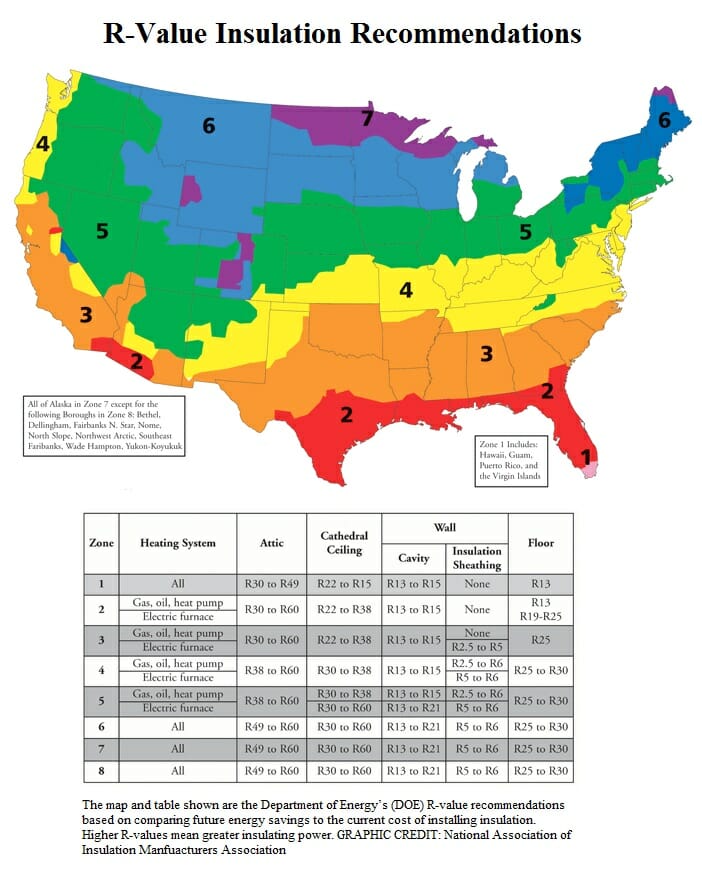What is R-Value?
Insulation levels are specified by R-Value, a measure of insulation’s ability to resist heat traveling through it. The higher the R-Value the better the thermal performance of the insulation. The table below shows what levels of insulation are cost-effective for different climates and locations in the home. Plus, we offer insulation that will last for the life of the building because it won’t settle, accumulate moisture or lose its R-value over time.

The amount of R-value recommended in a home varies depending on:
Residence Location – regions that get very cold during the winter such as the northern Plains require insulation with a high R-value while other areas may require just a lower one like Florida and the Southeast.
Age of your home – if your home is more than 10 years old, you likely need more insulation and there are many ways to enhance a home’s energy efficiency with fiber glass insulation.
The most effective solution to reduce your heating bill is blown-in fiber-glass insulation. There are many advantages of using blown-in insulation rather than insulation rolls, like installation, energy efficiency as well as where it can be used.
Benefits of Blown-In Fiberglass Insulation
Adjustable – Easily control the level of insulation you will need thus varying the R-value, i.e. blow in so many inches for an R-value of 15, and so many more inches until you have an R-value of 49.
Made of Virgin Materials – Reduces the chances of allergies.
Tighter Fit and Seal – Blown into tiny crevices, direct around existing corners, beams, or wiring.
Fast and Clean – Material is mixed and expanded inside a self-feeding integrated machine, providing easy clean-up and little dust production – total job averages less than 4 hours.
Extremely Energy Efficient – Keeps its R-value over time because it is does not settle and is moisture-resistant to prevent fungus or mold growth.
Be sure not to block the air passageways between your exterior soffits (eaves) and/or vents and the attic with your new insulation. Flow-through attic ventilation is very important. Kwaske Construction utilizes cardboard baffles which fit in between the roof rafters as they pass over exterior walls. These baffles create an unobstructed pathway for air to enter the attic.
